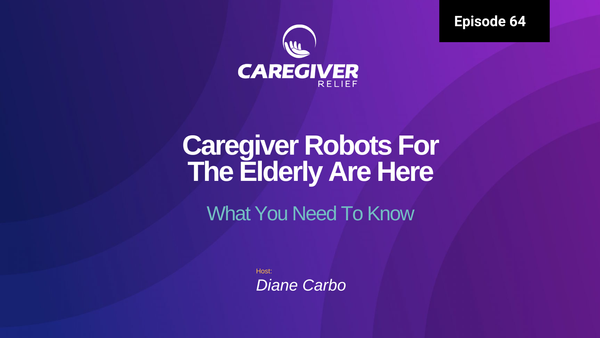What are Lewy Bodies in Dementia?

Introduction: Understanding Lewy Bodies in Dementia
Dementia is a group of symptoms that affect a person's cognition, communication and everyday functioning. It can be very difficult to live with and it affects millions of people worldwide. Lewy bodies are tiny, abnormal proteins that are commonly found in the brains of individuals with Alzheimer's and other types of dementia. Knowing about Lewy bodies can help to understand dementia and improve its diagnosis and treatment.
Overview of Lewy Bodies
Lewy bodies are protein deposits found in the brain, and they're thought to be linked to dementia. But what exactly are they? In this section, we'll outline exactly what Lewy bodies are, where they appear in the brain, and how they relate to dementia.
Lewy bodies are abnormal clumps of protein that form within the cells of the brain. They were first discovered by the German neurologist Friedrich Heinrich Lewy in 1912, and today they are known as one of the major hallmarks of Alzheimer's and other types of dementia.
In healthy brains, these proteins are normally found in small amounts, but in people with dementia, they start to accumulate in the cortex and other areas of the brain, forming clusters known as Lewy bodies. These Lewy bodies are thought to cause degradation of certain parts of the brain, resulting in memory loss, confusion, and other symptoms associated with dementia.
Lewy bodies are found in other parts of the brain too, such as the hippocampus, amygdala, and midbrain. They have also been observed in the spinal cord, brainstem, and cerebellum. In short, Lewy bodies can be found in many areas of the brain, and it is believed that this widespread presence may be related to the development of dementia.
Types of Dementias
Dementia is an umbrella term used to describe a variety of different conditions that impair cognitive function. Lewy body dementia is just one type of dementia. There are many other dementias, each with their own characteristics and symptoms.
Alzheimer’s disease is one of the most common forms of dementia. It affects memory, thinking, behaviour and emotions. There are also other types such as vascular dementia, frontotemporal dementia and mixed dementia. Each type has different symptoms and can vary in terms of severity.
Vascular dementia is caused by reduced blood flow to the brain, which can affect its ability to function properly. Frontotemporal dementia affects the frontal and temporal areas of the brain, causing changes in emotion, behaviour, language and motor skills. Mixed dementia occurs when two or more forms of dementia occur together.
Lewy body dementia is another form of dementia, which occurs when abnormal protein deposits, known as Lewy bodies, form in the brain. These protein deposits can cause a wide range of symptoms such as confusion, difficulty concentrating, movement problems and visual hallucinations.
What Causes Lewy Body Dementia?
Lewy body dementia (LBD) is a type of degenerative brain disease that can cause many types of cognitive issues. It is caused by the buildup of “Lewy bodies” in different locations on the brain. Scientists still are not sure what causes the formation of Lewy bodies, however, there are some potential factors that may explain why certain individuals develop LBD.
Genetics
Research has found that genetics play a role in LBD. Studies have identified several gene mutations that are associated with a higher risk of developing the condition. Additionally, having relatives with the condition is linked to an increased risk of developing it yourself.
Age
Another factor to consider when looking at the causes of Lewy body dementia is age. The condition is more common in older people, and the average age of diagnosis is around 75 years old. As people age, their brains become more vulnerable to damage, which can result in the buildup of Lewy bodies.
Lifestyle
Lifestyle and environmental factors may also influence the development of LBD. Things like smoking, excessive alcohol consumption, and air pollution have all been linked to an increased risk of developing the condition. Additionally, other medical conditions such as diabetes, Parkinson’s disease, and depression can increase the chances of developing LBD.
It is important to remember that these are just potential causes and should not be used as definitive answers. Research into the cause of Lewy body dementia is ongoing, so it is likely that more risk factors will be identified in the future.
Dementia is a neurological condition that can cause a wide range of symptoms which can vary from person to person. Lewy bodies are clumps of proteins that are found in the brain cells of those with dementia. Therefore, understanding lewy bodies is essential for understanding dementia.
The symptoms associated with Lewy body dementia often overlap with other forms of dementia, and can include:
- Trouble with problem solving and thinking clearly
- Changes in behavior, confusion and difficulty remembering things
- Difficulty in walking or maintaining balance
- Slowed movement and difficulty multitasking
- Sleep difficulties, including vivid dreams
- Hallucinations (seeing or hearing things that aren't there)
- Depression or apathy
- Anxiety
It's important to note that these symptoms often occur in other forms of dementia and some of the above may not be experienced in individuals with Lewy body dementia. It’s also important to be aware that Lewy body dementia often causes significant fluctuations in cognitive functioning, meaning that symptoms may come and go. This can be difficult for both the individual and their carer to manage.
Diagnosis
Dementia can be difficult to diagnose accurately. In the case of Lewy body dementia, the diagnosis will require input from multiple healthcare professionals. These may include a GP, neurologist, psychiatrist and psychologist. The various tests and assessments used to diagnose Lewy body dementia include:
- Physical exams and health history – A physical exam and review of the patient’s medical history can help identify any underlying causes.
- Neurological tests – These might include memory tests, reflex checking and blood pressure checks.
- Thorough cognitive testing – This can help assess changes in behaviour, speech, memory, language, thinking, and movement.
- Brain scans – A CT or MRI scan of the brain can help rule out other conditions such as stroke or a brain tumour.
- Lumbar puncture – A special procedure which will collect a sample of fluid from around the spine. This can help rule out certain infections.
In some cases, a biopsy may be recommended to confirm the diagnosis. This involves removing a small piece of tissue from the brain to be examined under a microscope. It is rarely done unless absolutely necessary.
Treatment for Lewy Body Dementia
When it comes to treating Lewy Body Dementia, there are several different approaches to managing the condition. Depending on the individual case and the severity of symptoms, a combination of treatments may be used to manage the disease.
The most common approach to treatment is with medications. These include drugs such as L-dopa, to increase dopamine levels, or antipsychotics, which can help with symptoms such as hallucinations and confusion. In some cases, antidepressant medications may also be prescribed.
In addition to medications, lifestyle changes may be recommended. This could include improved sleep patterns, increased physical activity, and eating a balanced diet. Cognitive behavioral therapy can also help with managing stress and dealing with emotions.
Treatment for Lewy Body Dementia may also involve addressing specific symptoms, such as hallucinations or muscle rigidity. In these cases, drugs may be prescribed to reduce the symptoms and help with managing the disease.
Other therapies, such as art therapy, music therapy, or animal-assisted therapy, can help those with Lewy Body Dementia to relax and express themselves. These therapies can provide a distraction from the symptoms of the condition, help improve mood, and provide a sense of normalcy.
Finally, it is important to note that the progression of Lewy Body Dementia can be slowed through early detection and treatment. Talk to your doctor about any concerns you may have.
Prognosis
Lewy body dementia is a progressive condition, meaning that it will get worse as time passes. Unfortunately, there is no cure for this type of dementia at present, which means that the most effective treatments are those which manage and slow down the progression of the condition.
The life expectancy of someone with Lewy body dementia depends on their age, general health, and how far the condition has progressed. Most people with Lewy body dementia live between 3-8 years after diagnosis, but this can be extended in certain cases.
When someone receives a diagnosis of Lewy body dementia, it can come with a range of emotions. Some people may feel relief that the cause of confusion and decline has been identified, while others may feel sadness or fear about the future. In either case, it’s important to remember that help is available to those who are living with this condition.
Looking After Someone With Lewy Body Dementia
Caregiving for someone with Lewy Body Dementia (LBD) can be a challenging, yet rewarding experience. Here are some tips to help you and your loved one manage the condition:
- Establish a daily routine. This will help both you and your loved one stay on track and ensure that all tasks, therapies and treatments are completed.
- Create a positive environment. People with Lewy Body Dementia may experience confusion, restlessness or agitation. Having a scheduled routine and providing a calm, pleasant atmosphere can help to reduce these symptoms.
- Educate yourself on symptoms and possible triggers. Knowing what to expect and what could potentially lead to an episode of confusion can help you better prepare and respond effectively.
- When necessary, take measures to ensure safety. People with Lewy Body Dementia can become disoriented and confused, so it’s important to ensure their safety at all times. Consider using motion sensors, locks and alarms to prevent them from wandering off.
- Encourage physical activity. Exercise has many benefits for people with LBD, including aiding sleep, managing weight and improving mood.
- Stay in communication with your doctor. Regular check-ups can ensure that your loved one is receiving the best care and help to monitor any changes in their condition.
- Take breaks. As a caregiver, it is also important to look after yourself. Ask for help as needed and make sure you take time out to recharge.
Caring for someone with Lewy Body Dementia can be overwhelming at times. But with good planning and support, it can also be very rewarding.
Coping Strategies
Living with or caring for someone with Lewy Body Dementia can be incredibly difficult. Fortunately there are a variety of strategies and techniques that can be used to help those affected cope with the condition.
It’s important to understand the symptoms and patterns of the condition, as this will help you anticipate any potential flare ups and better prepare you to manage them. Be patient with yourself and the person in your care – it can be difficult to deal with and can take some time to learn how best to manage.
It’s also important to take care of yourself and find ways to manage your own stress. Speak to your doctor if you need help managing your stress and anxiety, and join a support group if there is one in your area. It can be helpful to talk to other carers who understand what you are going through.
Take time to relax and practice self-care. Exercise, positive thinking and mindfulness activities can all help to reduce stress levels. Ask for help if you need it, and don’t feel ashamed to do so. There are many organizations and services that offer support for carers.
- Understand the symptoms and patterns of the condition
- Be patient with yourself and the person in your care
- Take care of yourself and find ways to manage your own stress
- Practice relaxation and self-care
- Ask for help when needed
Caring for someone with Lewy body dementia can be a challenging experience, but there are steps you can take to make it easier. With the right support from family, friends, community organizations and medical professionals, it can be possible to cope with the condition and live life to the fullest.
Final Thoughts on Lewy Bodies and Dementia
Lewy bodies in dementia can have a devastating effect, both on the person affected and their family and friends. It is essential to understand as much as possible about Lewy bodies and the different types of dementia, the potential causes, symptoms, diagnosis, treatment and prognosis for those affected.
If you are looking after someone with Lewy body dementia, it is key that you understand the condition, and what you can do to make their experience as positive as possible. There are lots of coping strategies available which can help those with the condition manage their illness and ensure they have the best quality of life.
If you'd like to learn more about Lewy body dementia, there are a range of excellent resources available online. These include information from trusted medical institutions, stories from people with first-hand experience and advice for carers. Taking the time to explore the resources available will help you better understand how to help those with Lewy body dementia.
Dementia is a complex medical condition that affects millions of people around the world. Understanding Lewy bodies and their role in dementia can be beneficial to both those suffering from and living with the condition, as well as those supporting them.
Lewy bodies are aggregates of proteins in the brain cells that lead to the death of these cells. They are found most commonly in those with Parkinson's disease, but can also occur in people with Lewy body dementia. Knowing how these abnormalities form, what they look like and where they occur in the brain can help in diagnosing and managing this type of dementia.
Different types of dementia have different symptoms and causes, and Lewy body dementia is no exception. It is important to understand what can cause this type of dementia and the signs and symptoms to look out for in order to make an accurate diagnosis. Treatment options are available and vary depending on the individual, so it is important to talk to your doctor about the right approach for you or your loved one.
Finally, it is important to remember that although Lewy body dementia can have a profound effect on a person's life, there are ways of managing the condition and helping those affected to live a fulfilling and enjoyable life. Looking after someone with Lewy body dementia can be difficult at times, but there are strategies and support networks available to help both the patient and their carers.
Overall, understanding Lewy bodies in dementia is key to obtaining the best outcomes for those affected and their families. Doing research and seeking professional help can ensure that everyone has all the resources necessary to achieve the best possible results.




